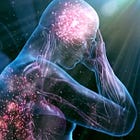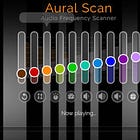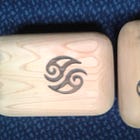Introduction
In this article, we consider how the hands (and feet) integrate with Nervous System states, and how their voluntarily usage can help to regulate ourselves, and others. As covered in my video above, the fine scale use our hands and feet tend to go offline when our Nervous System goes into defensive states, and if we exist in these defensive states chronically, their use can atrophy, as is very apparent in folks with a Parkinson’s diagnosis. Conversely, through appropriate exercises, and frequently using our hands and feet in play, we can send signals to our Nervous System that it is safe to be in the calm and relaxed state, thus easing suffering.
The Hands in Social Engagement
According to Dr Stephen Porges' work, see
mammals have a more evolved part of the Nervous System for purposes of Social Engagement and Social Co-operation. This involves mainly the Cranial Nerves and their use in social functions such as making sounds and vocal calls, and in facial expressiveness for transmitting emotional states to each other. Dysregulation of this Social Engagement part of our Nervous System seems now to be part of the underlying cause in many chronic conditions.
While I haven't seen Dr Porges refer to this yet in my reading through his works, I believe there is something different about the Social Engagement systems in humans (in fact, recent documentaries show, in the Great Apes in general), even amongst mammals.
Our hands.
We use our hands for expressing our emotions very significantly too. We can communicate very profoundly with our hands - indeed, we have developed sign languages - we can literally talk with our hands.
We can also hush each other with hands alone - meaning we can communicate that serious danger (e.g. a lion!) is present requiring everyone in the social group to keep quiet to avoid attracting attention, in such a way that we don't make any sound ourselves.
Orienting is also an important function of the cranial nerves - turning eyes or ears to the source of potential threat. But with our hands we can also, naturally, orient each other to potential threats which we individually may detect - pointing the finger in direction of threat.
We can also make "vocalizations" and "calls" through generating sound directly with our hands: clapping, clicking fingers, whistling through the fingers, not to mention playing musical instruments.
I have just communicated all this to you through my hands too - I typed this message!
I therefore postulate here that our hands are incredibly important parts of our Social Engagement, and this is why I suggest a lot of hand work is highly beneficial in chronic conditions, and conversely why the hands and fingers appear to become problem areas in conditions like Parkinson's Disease.
I therefore believe that just as Dr Porges has developed therapies that can be remarkably successful via accessing the middle ear through appropriate choices of sound,
accessing the feelings in the fingers may also be therapeutic. Even cradling a cup of hot drink in the hands can be helpful. Applying gentle pressure (compression) to the fingers may help relaxation. Perhaps holding vibrations of the right frequencies in the hands may work too.
Recovery is in Our Hands
The reason that our hands and feet may have such a crucial role in Nervous System regulation is probably simple. If you've ever seen one of those grotesque renderings of how the human body is represented in our own brains, the hands are absolutely massive. There is so much of our brain and sensory pathways devoted to the hands and feet.
Let us consider the evidence of the importance of the hands in health and in disease.
One of the first things which usually goes in people developing Parkinson's like symptoms is hand writing: hand writing gets smaller and smaller. In other words, the range of hand movement diminishing is one of the early diagnosis points of PD, and many other chronic conditions too.
The exercises which tend to work, those practices which can greatly aid recovery, all involve the hands intimately. Riding bicycles, unlike walking, involves the handle bars and the breaks. Walking with poles and sticks brings the hands into play. Tai-Chi, Yoga, Qi Gong, all also focus heavily on had shaping and mudras. Dancing involves the expression of the hands. Then there is boxing exercise, which could not be more hands focussed.
All the things I discovered and demonstrated in my video diary. The twirling of batons. The keep-it-up bouncing a piece of cotton wool from hand to hand. The Yo-Yo balls on elastic string. The bat and ball. The tennis balls. The basket balls. The balloons. The self-hugging. All involve, at a high level, the hands. Opening the hands. Touching something. Holding something. Closing the fingers around something. Letting go of something. Reaching out.
Conversely, as my dancing and other antics in my video diary entries evolved to become more fluid and lithe, the expressiveness of my hands, in turn, becomes noticeably more pronounced as a “side-effect”.
Body Memories in the Extremities
The hands and feet are prime areas for storage or writing of Body Memories of trauma or stressful episodes,
as they are often used for defensive purposes during traumatic events, and hence are in the front line for significant pain and damage. Trauma can therefore often manifest as symptoms in the hands and feet, and conversely, trauma healing can often significantly help reduce symptoms in the hands and feet, for this reason.
The Hands and Feet and Fascia
According to Deanna Hansen, inventor of Block Therapy,
the hands and, especially the feet, are often cause sites, resulting in restrictions, constrictions, and adhesions, elsewhere in the body. This is because they are the places furthest from the “furnace” of the diaphragm, and hence tend to be coldest places, making the fascia there more prone to becoming stiff, sticky, and dehydrated. Indeed, Deanna has a saying: “death beings in the feet”, and having lived in a carehome for a number years, I have observed this as true. Once a resident becomes immobilized, you can literally watch the decline of the health of the fascia in their lower legs and feet. Eventually, these areas swell and look like they are made of wood or rock. All the folks with dementia here have poor fascia in their lower extremities.
Due to the hands and feet being such portals into the Nervous System, poor fascia health here will likely be constantly sending danger and pain systems, resulting in a propensity to inhabit defensive states. Conversely, stiffness and immobility of the hands and feet make it hard to exercise them, or use them for play, and thus represent the loss of the ability to use these portals for helping to calm or relax.
Improving and maintaining fascia health of the hands and feet is therefore vital for health and wellbeing generally, but especially for symptom reduction with chronic conditions. The Block Therapy youtube channel is a good resources for suggested fascia decompression exercises for the hands and feet.
For further shared knowledge on these areas, see our online courses and Community Area, which include my course on the Nervous System, and a jointly created course with
of on Fascia and Body Memories:










The Hands and Feet as Portals into Our Nervous System